The story of Kon-Tipi
Andrew McMillion is the Plant Knowledge Coordinator and board member of The Norwegian Seed Savers. He spent 10 years studying and working with ecology on his farm an hour outside Oslo where he focused on saving seeds and designing a regenerative ecosystem based on Permaculture Principles and Deep Ecology. This is his story of how the Kon-Tipi design emerged.
After first making a small 2 m3 greenhouse out of old windows on a hugelbed in 2014, I started researching greenhouse designs. I wanted something that could store heat and be able to create a microclimate good enough to grow whatever I wanted.
I was smitten with the idea of building my own compost heated greenhouse after reading about it on the New Alchemist website. Eliot Colman’s The Winder Harvest Handbook inspired me to try all kinds of vegetables for food and seed in the greenhouse.
I got ahold of a 300m2 greenhouse at a nursery nearby that was going out of business and spent the winter of 2015 demolishing it in the snow without power tools. It was not erected on my farm before 20th May 2016 with the help of woofers.
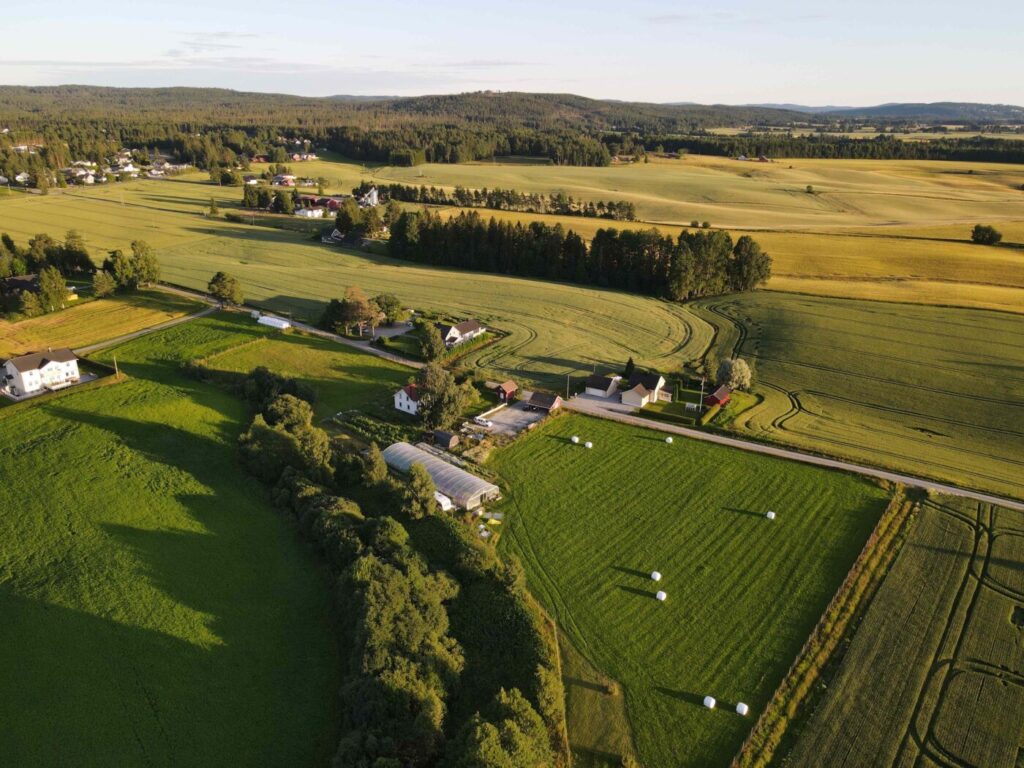
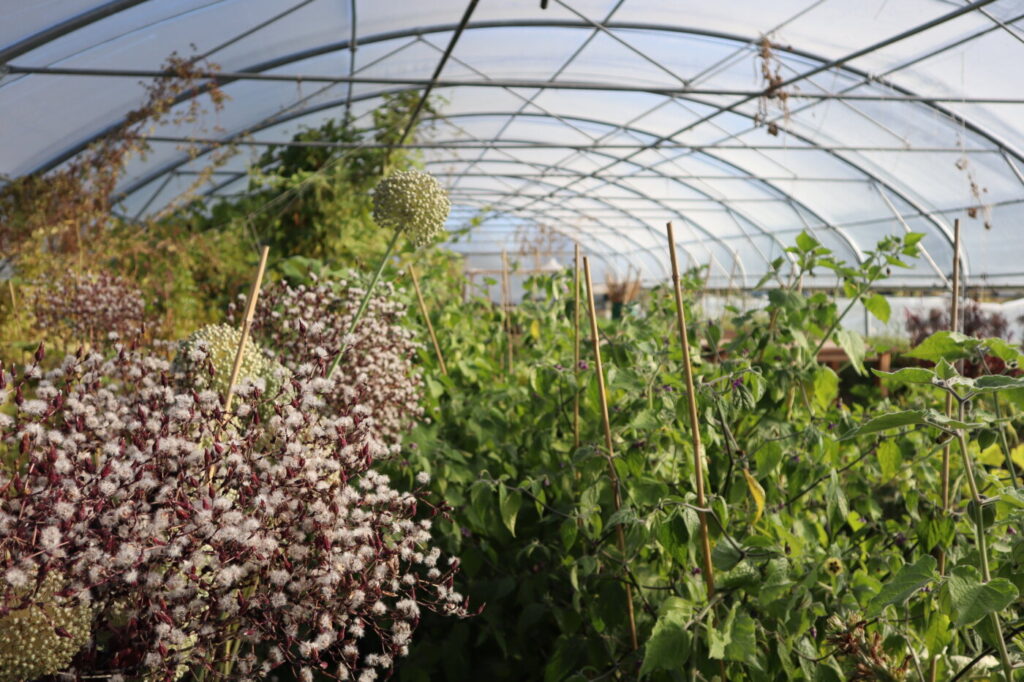
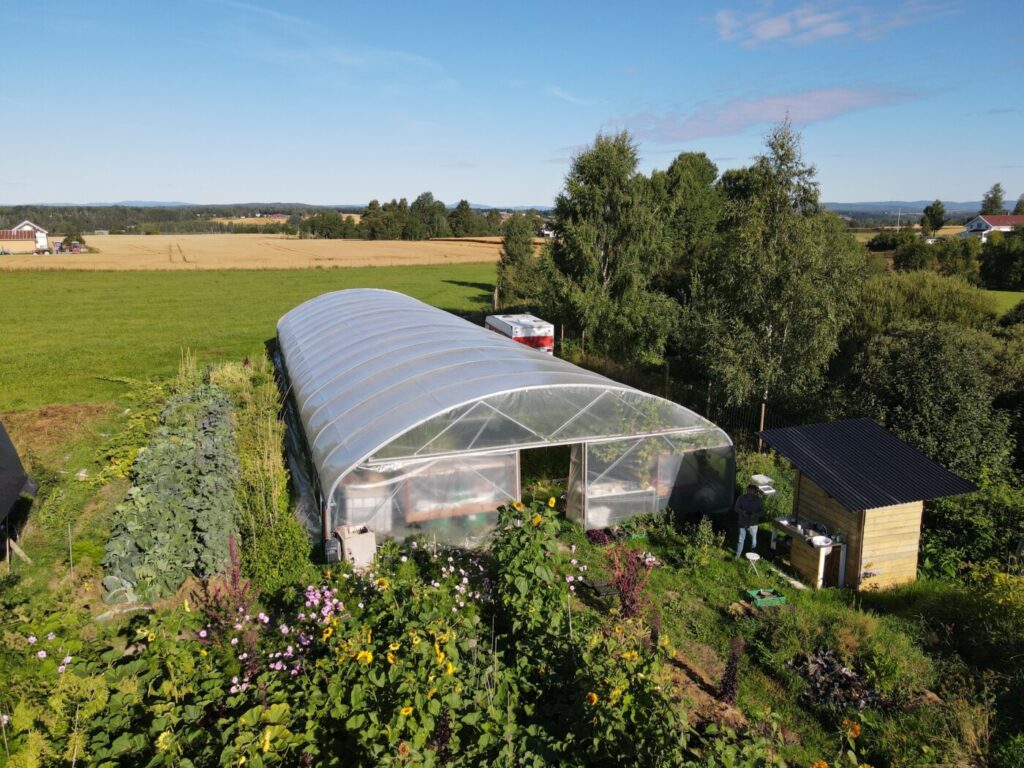
Building my greenhouse and then growing in it, was pure pleasure. The experience I felt as the sun was setting and I had just watered the entire greenhouse by hand; it was as if the plants were thanking me and the soil was pulling me into a deeper connection to all the life I had manifested in that microclimate. I was one with that greenhouse like I had been one with nothing else.
I started meditating on what that feeling was and how I might make it last. The feeling returned in waves, usually when I had been putting in the work to paddle out to ecosystems resonance. I passed through long periods of not wanting to be anywhere else and spent time studying ecology to understand better what it was I was connecting to.
I had run for local election and succeeded in getting a seat on the municipal board as the only Green Party representative. The dreams I had of making some kind of difference soon met the wall of a lack of power to motivate my fellow board members to action on issues of the utmost urgency. The greenhouse was my refuge from the harsh realities of this world, and the only place where I felt I was making some tangible difference.
I studied Permaculture and organic agriculture for a few years, while experimenting with seed saving, building soil and everything ecology related. I wanted to know the personal stories behind the thinkers of key ideas in the history of thought on ecology. This changed my whole world view and the total experiences of working in ecology. As I applied that knowledge, I started to sense patterns in what I was doing. I no longer need to understand it rationally, I noticed the feedback as I applied ecological wisdom to more deeply resonate with my local ecosystem, my place. These key ideas of how nature works and for how we can live healthy vibrant lives without destroying our ecology turned into my Web of Ecological Thought.
Over and over, I returned to greenhouses in my mind. I dreamt of a world filled with them. Where happy people and happy plants enjoyed the same space with birds and insects, the sun the sky, the trees and the soil in harmony with each other in their place.
On my path, I considered how to repurpose and redesign many proven designs. In 2019 I was asked to hold a talk on greenhouse design and use for the Gaiasenter, which is an ecovillage in Alvdal Norway up in the mountains. They built a 300 m2 walipini into the side of the mountain, using a digger, local logs and gabions based on my design advice.
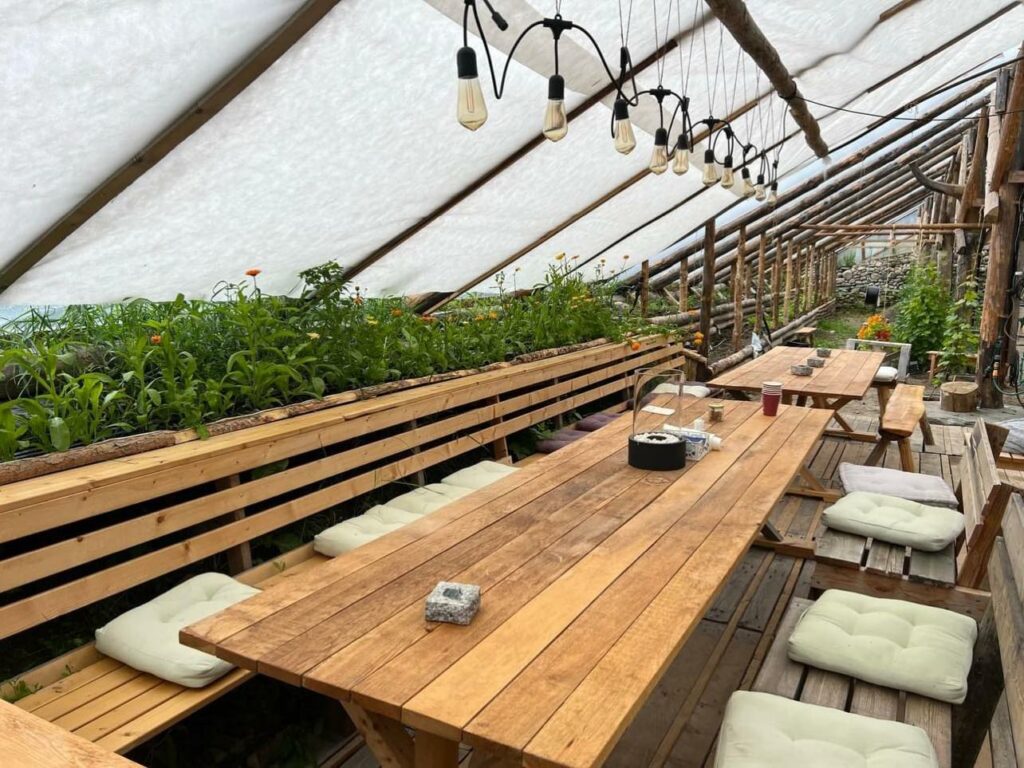
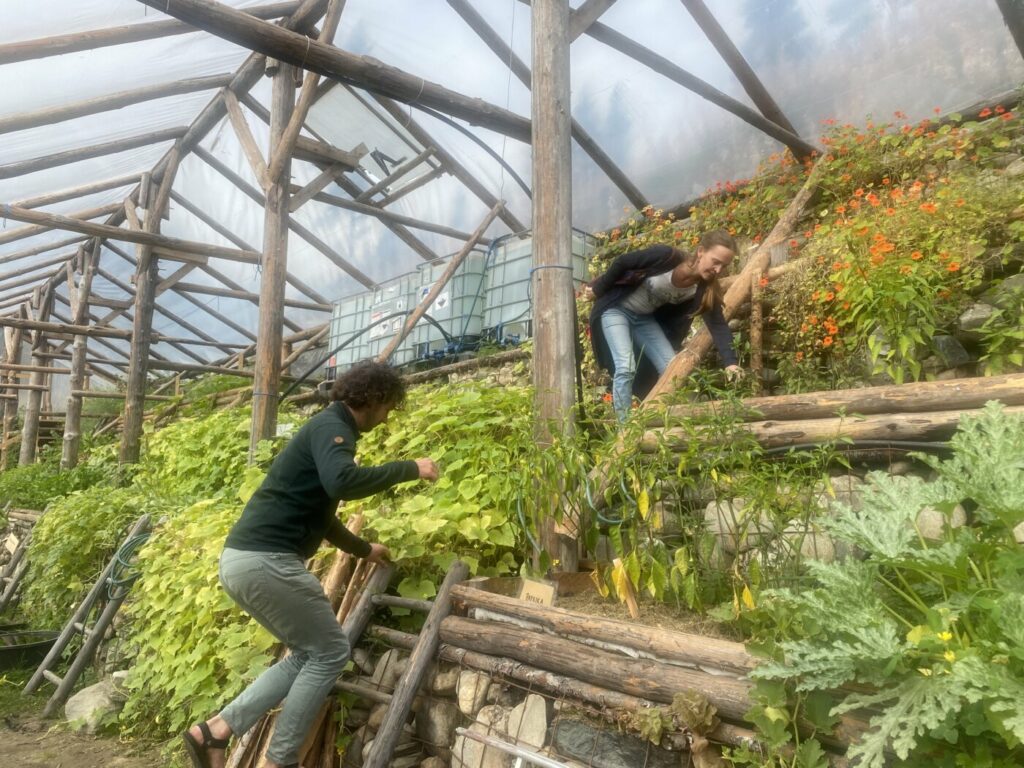
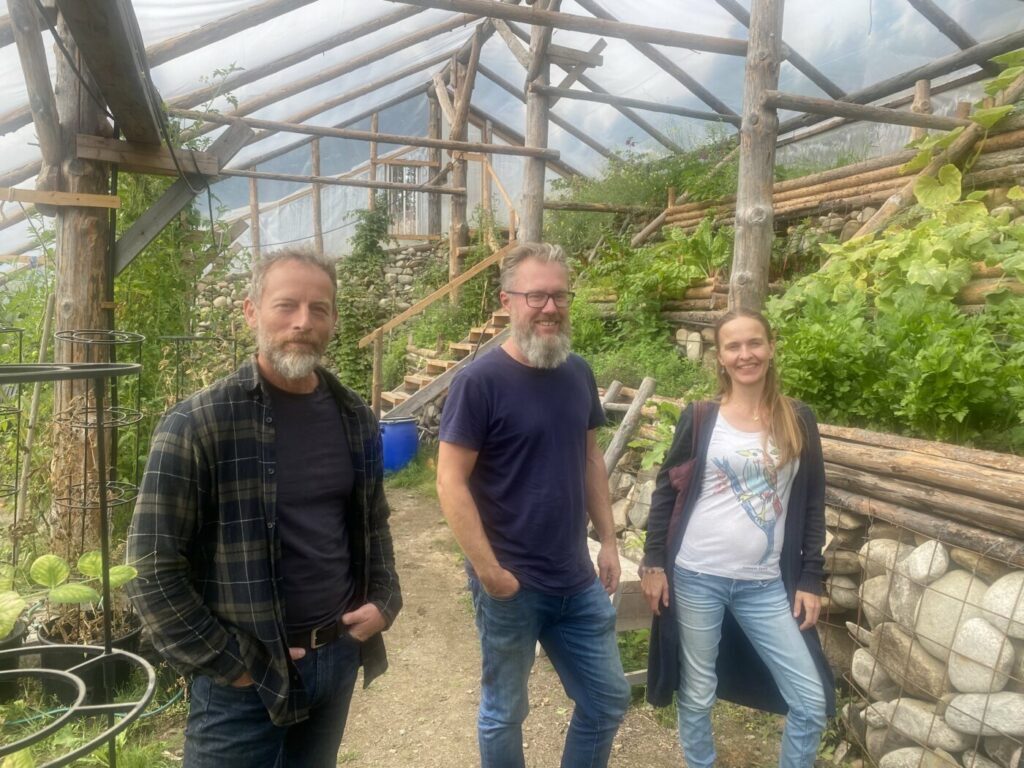
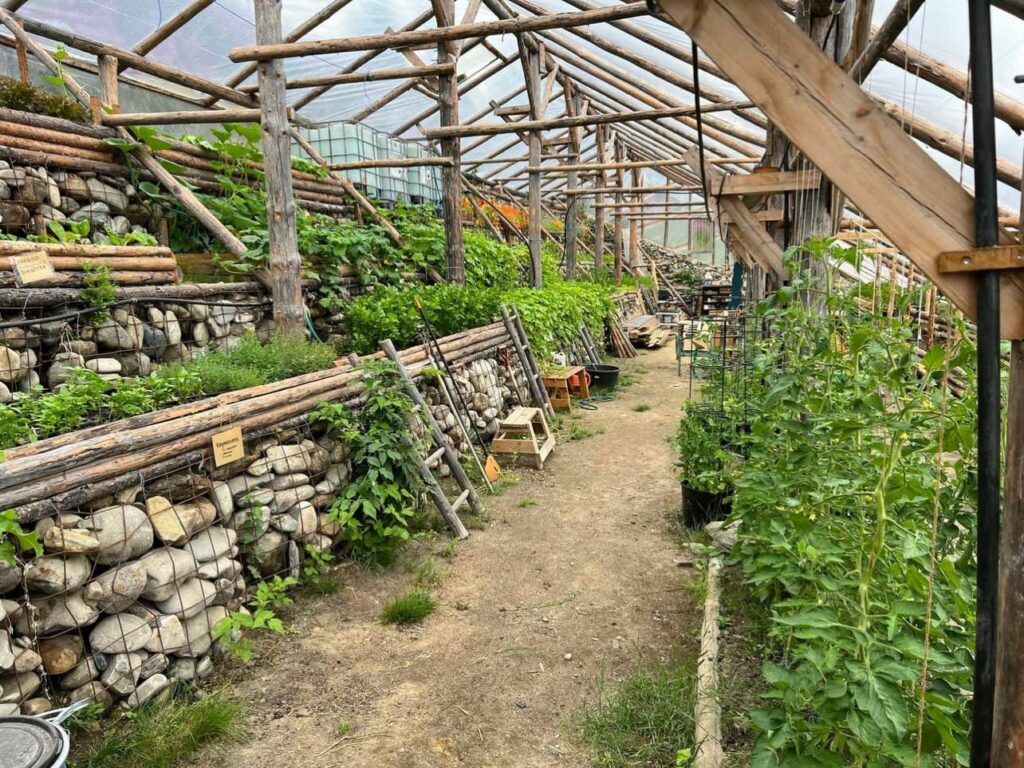
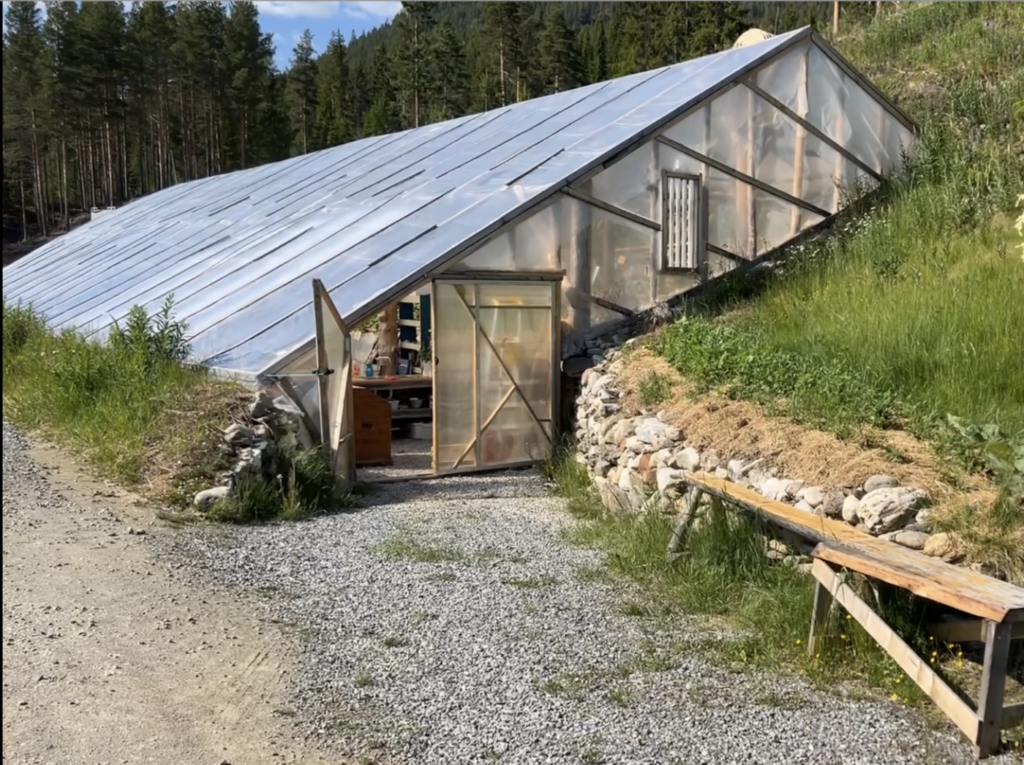
The bakery at Losæter has also been an inspiration and central meeting place for eco-culture in Oslo where I have spent many a joyous day with likeminded people celebrating healthy local food and gardening.
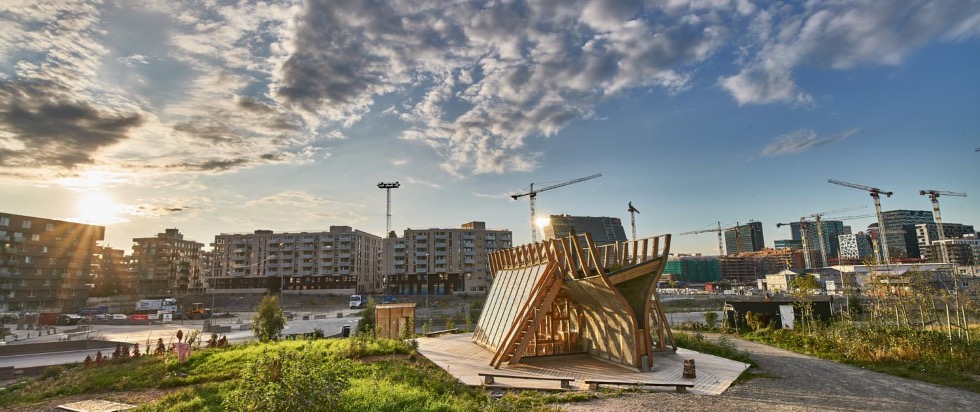
It has a wood fired oven in the center and made me wish I too could make a fire in the evenings when the sun went down. The extreme between the warmth of the sun captured in a greenhouse, and the sudden loss of that warmth once the sun sets, inspired me to think differently and design something centered around fire.
At first I turned to domes after reading about and then visiting The Heart Followers “Hjertefølgerne”.
However, I soon found that domes are hard to build, expensive and not always as elegant as they may seem at first. I started shareing my designs with other permaculturalists and eco-villagers and got feedback that they were too expensive and hard to build. I continued working towards designing a structure that is as elegant and simple as possible, but still deals with the main design flaws most greenhouses suffer from, while keeping the fire at the core.
As the future becomes more unstable due to wave after wave of climate and ecology crisis, people will need appropriate tools for how to deal with them. I wanted to make a greenhouse that could be made from local materials in a short amount of time and still stand up to the harsh weather that thrashes so many a greenhouse in the North.
Little did I know that I would be confronted with an unstable climate far sooner than I had anticipated. In 2021 my family was split in a divorce, and I had to find a new farm to move to. It was as if the crisis had come early for me and I was a climate refugee who had lost the place I loved, my home, my ecology and my family.
I eventually landed on Rolstad Gård which is a huge conventional grain farm. That winter I thought I would maybe just make some simple tipi structures out of a few trees and some poly-plastic, just to get some plants going and maybe grow a small patch of vegetables.
As luck would have it, I had developed a tie to Romerike International School and helped them set up their school garden. I started teaching courses on sustainability, Permaculture and seed saving for the teachers and students. The principal Will Warren had a vision of a beautiful school with a greenhouse, a creek, some chickens and a beautiful garden. We started cooperating on an application for funding to build a greenhouse there, while I held regular courses for the students.
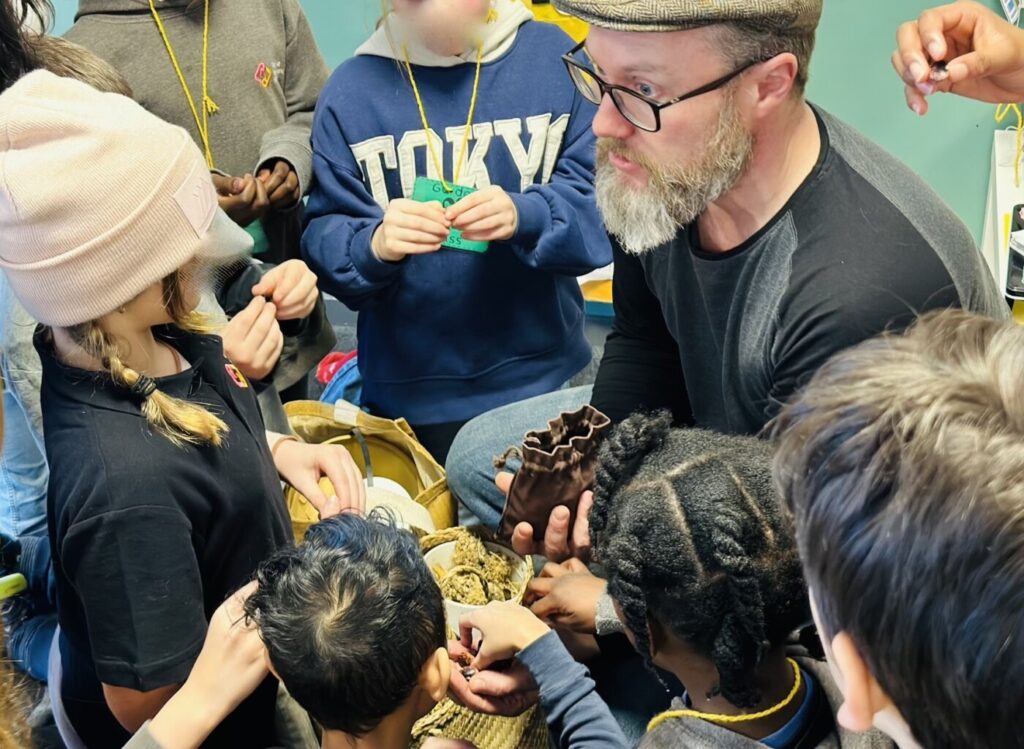


We reached the deadline for the Sparebankstiftelsen application on the 1st April. That same day I realized I could probably build a prototype for the rapidly approaching season on Rolstad farm. I set to work in the forest nearby felling 30 trees to use for tipi poles. I searched for companies that made lavvos and tipis and contacted a few before ordering a bespoke membrane from Arctic Lavvo in Kautokeino. On the 27th April we held a tipi raising ceremony with students from Romerike International School. Here is a short film from the day.
This inspired me to keep working on the design. How could we use less materials and utilize the space better. I came up with a second design and ordered another membrane from Arctic Lavo. This design was superior in that it used only one pole. It also used the edge of the membrane as a water catchment to self-water the plants which we placed in a circle right around the inner edge. The gap at the base meant that it was a self-ventilating, self-watering system. The top of the membrane around the pole had zippers so you could open it to let water in and air out. The only place that did not get water was the circular path between the pole and the outer edge of the membrane.
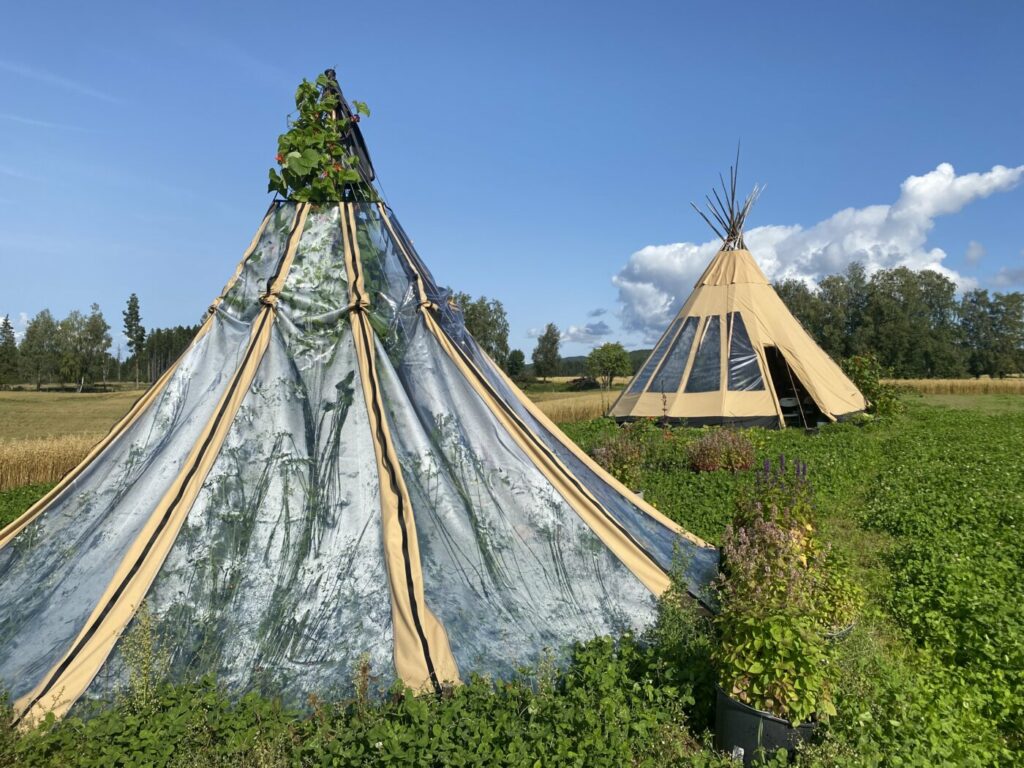
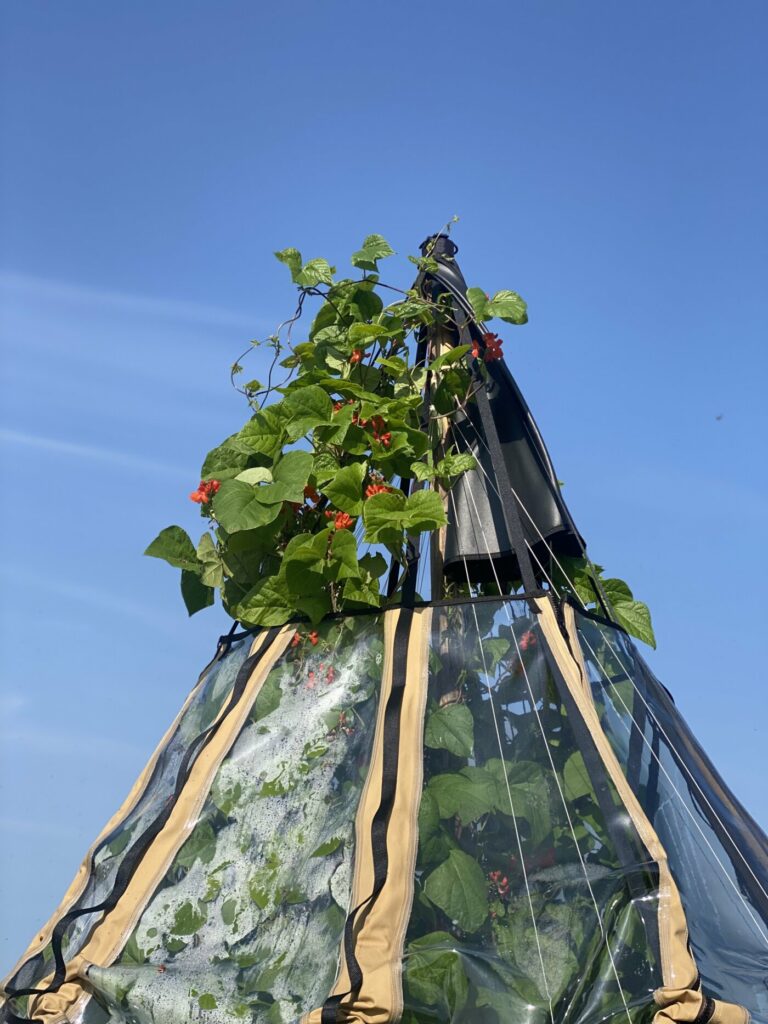
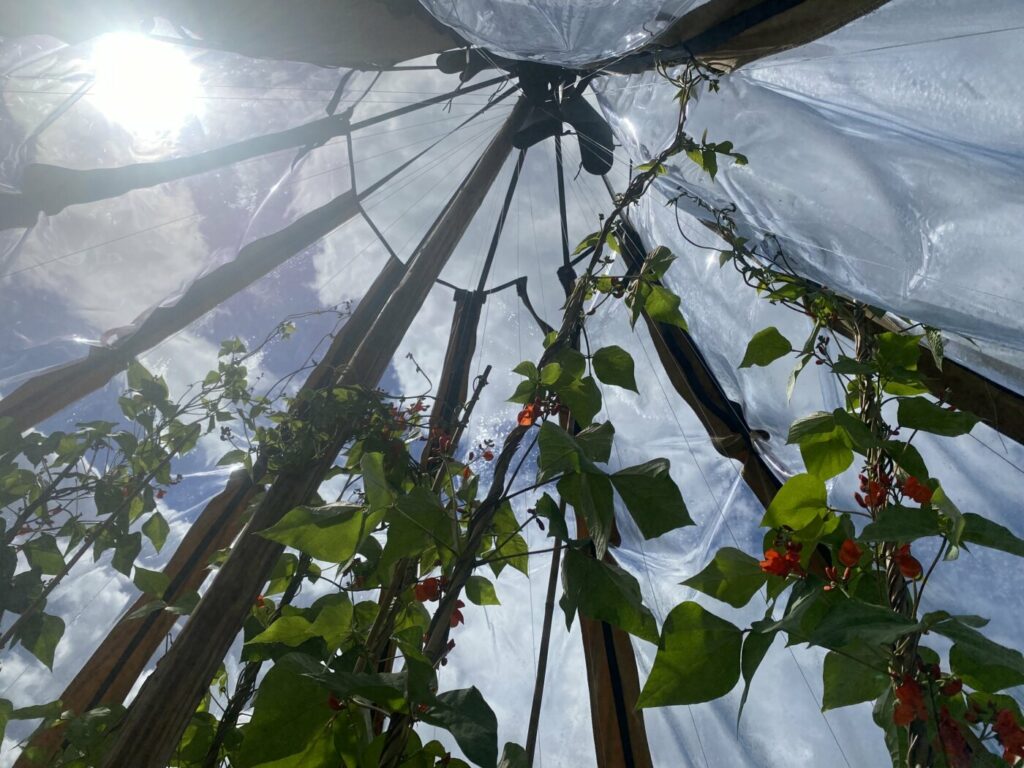
When we heard back from Sparebankstiftelsen that we had been granted half the amount we had applied for, we had to rethink things. Initially, we had applied for two greenhouses, one for the school and one for Rolstad farm. The problem is the solution, and after several weeks of creative meditation walks in nature, the idea emerged to combine the two builds into one mobile structure that could be used at both locations. Combining the size of the first prototype, with the design improvements from the second one, and then placing it on a trailer, seemed to answer all our problems.
The search for an architect to make the working drawings led me to Margit Klev. She had designed a gorgeous greenhouse which stacked functionally as her home, which you can see footage of here. Together with Margit and her partner Nicolas Jury from Outline Arkitektur we began working on the sketches and then the 3D drawings for the design of the Kon-tipi.
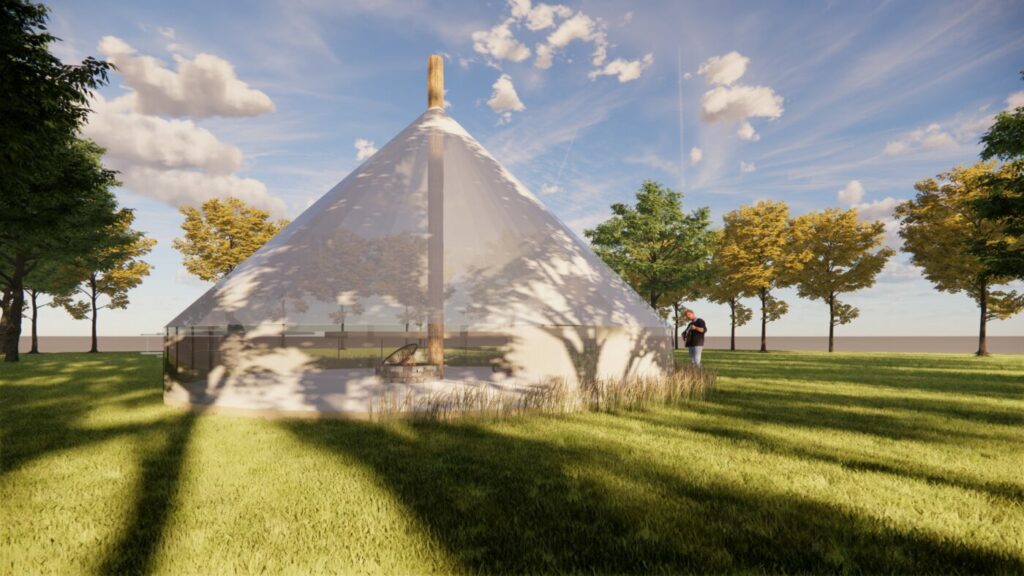
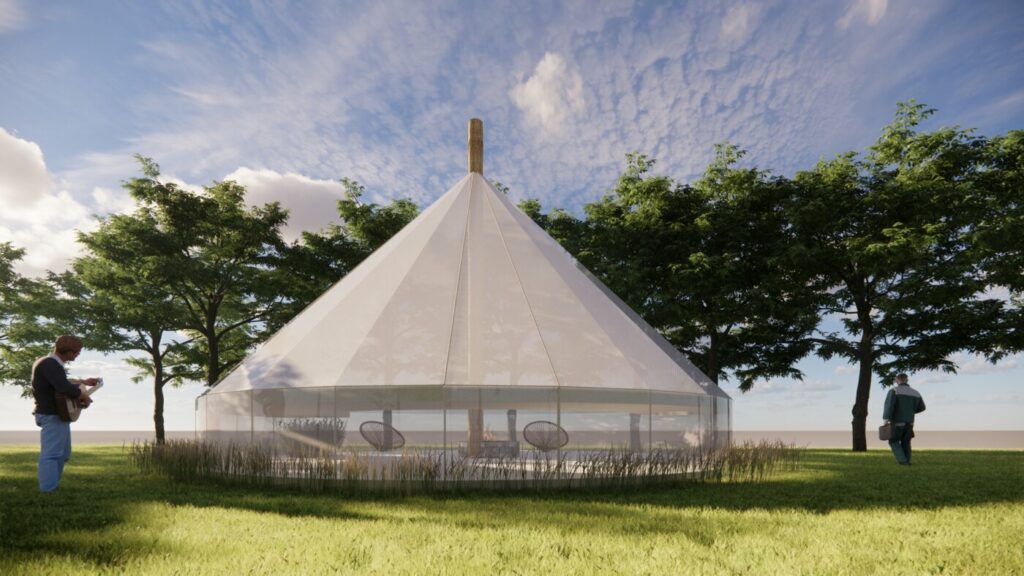
This winter we will be building the Kon-tipi and the aim is to have a new tipi raising ceremony at Romerike International School in the spring. The gap from dream to reality is often easier to bridge than you think, if you can only grow with the flow and find solutions to challenges that our ecosystems face. Together we can creatively get ourselves out of any crisis, but we have to become connected to it and work with nature and each other to creatively respond to change.
